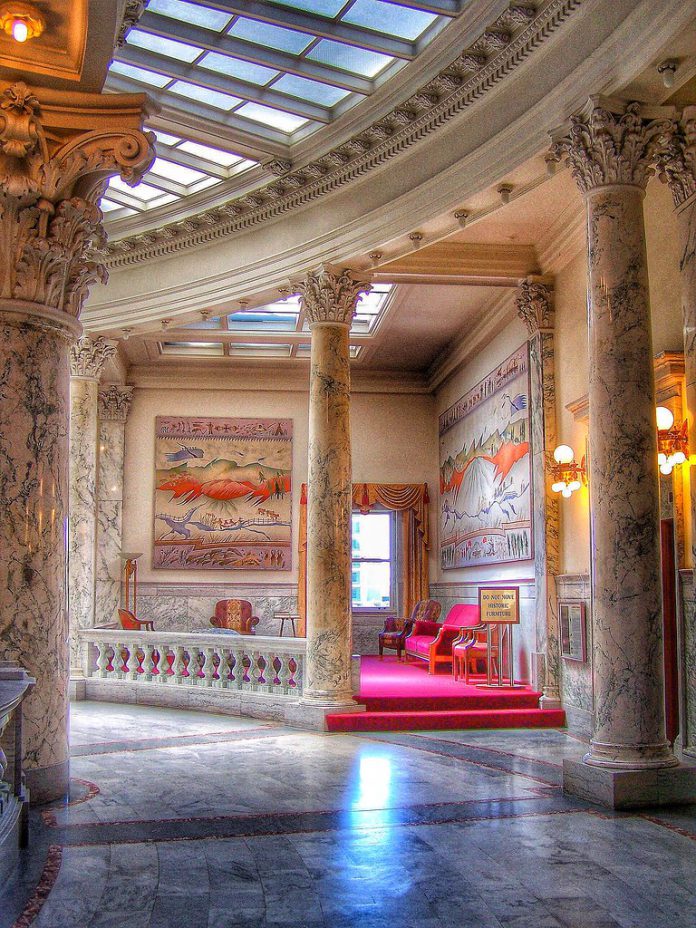Marble, also known as metamorphosed limestone, is a stunning natural stone, with each rock being unique to its location and formation. It had been concealed in the earth for millions of years before humans discovered it.
Artists, builders, and designers have always admired luxurious marble for its hues, strains, and particular brilliance and adaptability. Mr Balasaheb Gunjal, owner of Guru Krupa Marbles, Maharashtra says: “Nothing beats marble when it comes to bringing a sense of luxury to house décor. This royal material may quickly transform the appearance of any room.” He also says that in India, luxury marbles are of two kinds: Indian marble and Italian marbles. Indian marble is widely mined in north India, is a low-cost option, and comes in a broad range of colours and textures. Indian marble is a comparatively tougher stone with a medium lustre. It is the best marble for flooring in India in terms of sustainability whereas Italian marble variants are well-known for their high lustre and ability to add visual appeal to the space in which they are used. They are mined in Italy and are widely available in India. These marbles are often sold as slabs.”
 As natural marbles are expensive, people are switching to artificial marbles.
As natural marbles are expensive, people are switching to artificial marbles.
Natural marbles: Marble is a metamorphic stone that is mostly made of calcite. It’s a kind of limestone that has evolved through time as a result of extreme pressure and heat. Due to the presence of diverse minerals in the limestone, some marbles are immaculately white, while others contain a variety of colour veins. Because natural marble is a hard rock that reacts to acidic liquids, it changes colour when exposed to them. Natural marble is now widely used in modern house décor, including external walls, sculptures, kitchens, stairwells, and toilets.
Artificial marbles: In terms of geological activity, artificial marble varies from real marble. It is man-made, composed of tiny marble debris, stone powder, quartz, sand, colophony, plastic, cement, and acrylic glue in a specific ratio. The mixture is vigorously agitated under a vacuum and then held under high pressure in a mould to solidify and produce firm marble boulders. Because imitation marble is less expensive, many homebuyers choose it. They are typically used in furniture, kitchen counters, walls, and flooring.
Process of converting raw marble into luxurious marble –
1. Marble Mining: The marble extraction procedure is carried out at quarries located in the rugged mountains. Professionals with significant knowledge and very advanced equipment are utilized to undertake effective sourcing and carriage activities.
2. Processing: Following extraction, the blocks are chopped into smaller sizes using specialized instruments such as diamond wire machines, stone crushers, and drills, among others. The blocks are further chopped into cubes or slabs and placed into heavy-duty trucks for storage.
3. Loading: Vehicles with a high loading capacity are used to deliver vast quantities of material to certain facilities, depending on whether the material has to be treated or transformed into sheets.The marble slabs or sheets are then extensively scrutinized before being put through further necessary operations such as finishing, polishing, and plastering in order to transform them into a finished product. After a thorough examination and appraisal, the marble is ready to be sold on the market.
Why is marble expensive?
Marble is very pricey because of its limited availability, durability, and eternal beauty. The natural stone is in high demand because of the exquisite sensation it provides in any setting. Furthermore, the process of transforming raw pieces of granite into luxurious slabs of lavishness requires a lot of energy. Marble is a popular natural stone used in interior decoration. While marble has a reputation for being expensive, costs vary widely based on a variety of elements, the most important of which is its aesthetic beauty.

The price of marble is affected by:
1. Availability
Demand for specific types of marble – for example, higher grade marble with fewer veins and grains, specific colours drives up the price.
White marble loaded with calcites is more expensive than coloured dolomite marble with mineral impurities. Natural blemishes are more prevalent than in pristine white marble. Because white marble quarries are scarce, it costs more than most other forms of marble. Some beautiful marble kinds (such as Statuario) are exclusively found in one quarry, making them even more precious.
2. Lifestyle
As marbles are considered to be the symbol of prestige and reputation, modern homeowners desire to keep up with lifestyle trends, which influences the price of marble. Grey marble, for example, is popular and in high demand among forward-thinking clients, increasing the market price of the marble category. Similarly, imported premium marble kinds are becoming popular, even though they are more expensive than the commercial varieties.
3. Thickness of the slab:
In Indian household thickness of marble slabs vary from 16mm to 20mm and thus thickness influence the price.





